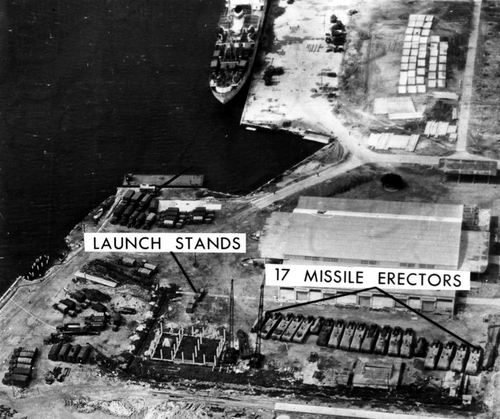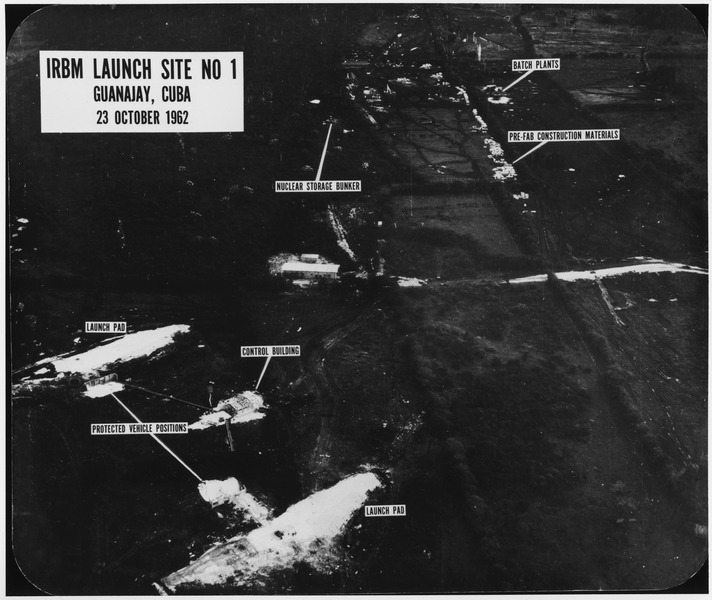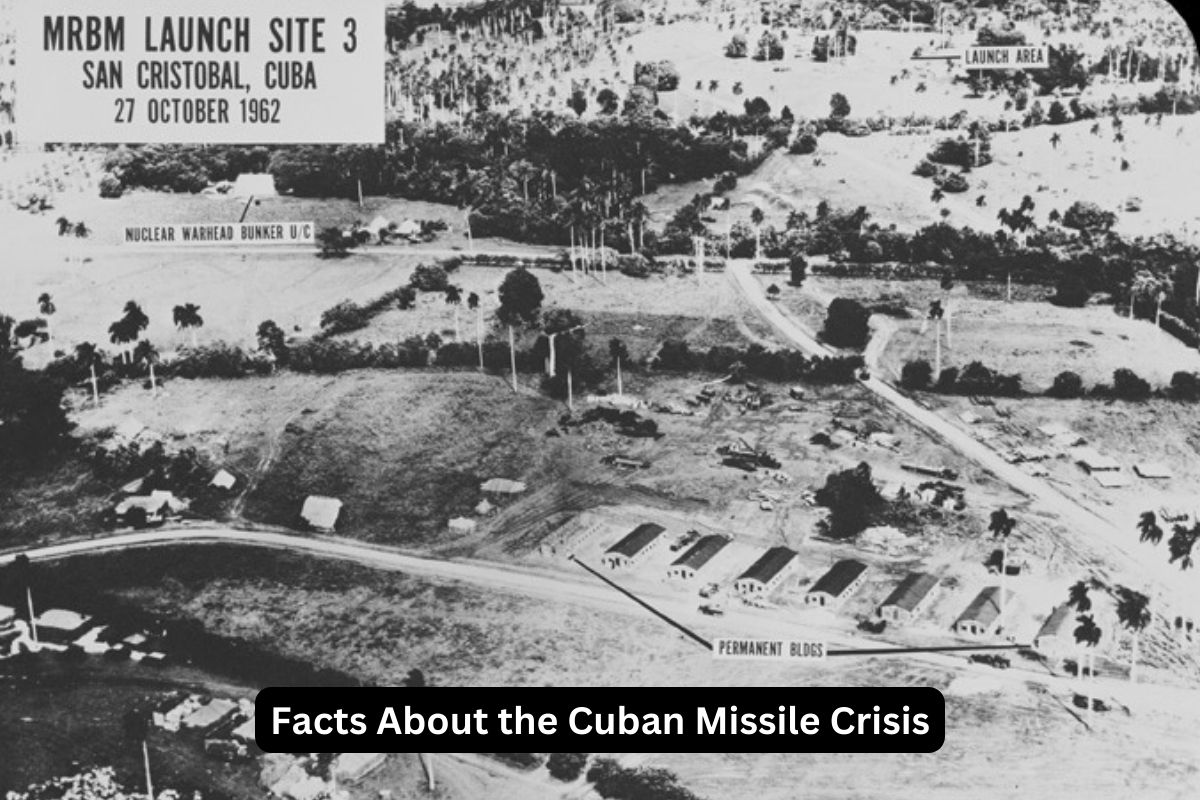The Cuban Missile Crisis of October 1962 stands as one of the most harrowing episodes of the Cold War, casting a shadow of nuclear annihilation over the world for 13 tense days.
Its implications continue to reverberate in contemporary geopolitics, offering critical lessons for navigating today’s complex international landscape.
This article delves into the depths of the Cuban Missile Crisis, exploring its historical significance, the strategies employed by the key players, and the lasting impact it has had on global security.
From the brink of nuclear war to the establishment of vital communication channels, the crisis reshaped diplomatic dynamics and continues to shape foreign policies to this day.
Cuban Missile Crisis Facts
1. Occurred in 1962, lasting 13 days
The Cuban Missile Crisis occurred in October 1962, spanning a nerve-wracking 13-day period. It began on October 16 when the United States discovered evidence of Soviet missile installations in Cuba, setting off a chain of events that brought the world to the brink of nuclear war.

2. Soviets deployed missiles in Cuba
The crisis was ignited when American reconnaissance planes captured photographic evidence revealing Soviet ballistic missile sites being constructed in Cuba.
These missiles, with their capability to carry nuclear warheads, posed an immediate threat to the United States, given their proximity to the American mainland.
Also Read: Bay of Pigs Timeline
The discovery of these missiles heightened tensions between the two superpowers, with the United States viewing them as an unacceptable strategic threat.
3. US initiated a naval blockade
In response to the Soviet deployment of missiles in Cuba, President John F. Kennedy and his administration decided to enact a naval blockade (officially termed a “quarantine”) around Cuba.
The blockade aimed to prevent further Soviet shipments of military equipment, particularly missiles and nuclear materials, from reaching the island.
The blockade was a crucial strategic move to demonstrate American resolve and to halt the escalation of the crisis while giving diplomatic efforts time to find a peaceful resolution.
4. Intense diplomatic negotiations followed
Following the revelation of the Soviet missile installations in Cuba and the implementation of the naval blockade by the United States, intense diplomatic negotiations ensued between the two superpowers.
Also Read: Timeline of the Cuban Missile Crisis
These negotiations occurred through various channels, including direct communication between President Kennedy and Soviet Premier Nikita Khrushchev.
Additionally, backchannel negotiations were conducted through intermediaries, such as the United Nations and the governments of other neutral countries like Turkey.
Both sides engaged in a high-stakes diplomatic maneuvering, trying to find a peaceful resolution to the crisis while avoiding the outbreak of a nuclear war.

5. Both sides were close to nuclear conflict
Throughout the 13-day crisis, tensions escalated to unprecedented levels, with both the United States and the Soviet Union prepared for the possibility of nuclear conflict.
The United States considered various military options, including airstrikes to destroy the missile sites in Cuba. However, such actions risked triggering a full-scale nuclear exchange with the Soviet Union.
Similarly, the Soviet Union prepared its military forces for potential retaliation against any American aggression. The world watched anxiously as the superpowers engaged in a dangerous game of brinkmanship, with the threat of nuclear annihilation looming large.
6. Agreement: Soviets removed missiles, US pledged no invasion
Despite the heightened tensions and the imminent threat of nuclear war, the Cuban Missile Crisis was ultimately resolved through a diplomatic agreement.
In a dramatic turn of events, Soviet Premier Nikita Khrushchev agreed to remove the Soviet missiles from Cuba in exchange for a public commitment from the United States not to invade Cuba. Additionally, there was a secret agreement between the two nations, in which the United States pledged to remove its missiles from Turkey, near the Soviet border.
This agreement, reached on October 28, 1962, effectively ended the crisis and averted a nuclear catastrophe. The resolution of the Cuban Missile Crisis marked a significant diplomatic achievement and underscored the importance of dialogue and negotiation in preventing global conflict.
7. “Hotline” established for direct communication
In the aftermath of the Cuban Missile Crisis, both the United States and the Soviet Union recognized the urgent need for a direct communication link to prevent future misunderstandings and crises that could potentially escalate to nuclear war.
As a result, the two superpowers established a direct communication link known as the “Hotline” between the White House in Washington, D.C., and the Kremlin in Moscow.
This dedicated hotline enabled instant communication between the leadership of the two nations, allowing for immediate dialogue and crisis management in times of heightened tension or conflict.

8. Highlighted dangers of nuclear brinkmanship
The Cuban Missile Crisis served as a stark reminder of the perilous consequences of nuclear brinkmanship—the practice of pushing dangerous situations to the brink of catastrophe in order to achieve strategic goals.
The crisis demonstrated how close the world came to nuclear war and underscored the catastrophic risks associated with the possession and deployment of nuclear weapons by rival superpowers.
It heightened global awareness of the existential threat posed by nuclear arsenals and emphasized the urgent need for effective arms control measures and diplomatic solutions to prevent future crises.
9. Led to increased arms control efforts
The Cuban Missile Crisis had a profound impact on international efforts to control the proliferation of nuclear weapons and reduce the risk of nuclear conflict.
In its aftermath, both the United States and the Soviet Union intensified their efforts to negotiate arms control agreements aimed at limiting the spread of nuclear weapons and reducing the number of nuclear warheads in their respective arsenals.
These efforts culminated in landmark treaties such as the Strategic Arms Limitation Talks (SALT) and the Treaty on the Non-Proliferation of Nuclear Weapons (NPT), which aimed to promote disarmament, prevent nuclear proliferation, and enhance global security.
10. Impact on future foreign policies and historical reflection
The Cuban Missile Crisis left a lasting legacy on the foreign policies of both the United States and the Soviet Union, as well as on the broader dynamics of international relations.
It prompted a reassessment of Cold War strategies and fostered a greater emphasis on diplomacy, negotiation, and crisis management in global affairs.
The crisis also spurred scholarly reflection and analysis, with historians and policymakers studying its lessons to better understand the dynamics of nuclear deterrence, crisis escalation, and conflict resolution.
The Cuban Missile Crisis remains a pivotal moment in modern history, serving as a cautionary tale of the perils of nuclear confrontation and the imperative of international cooperation in preventing catastrophic conflicts.
